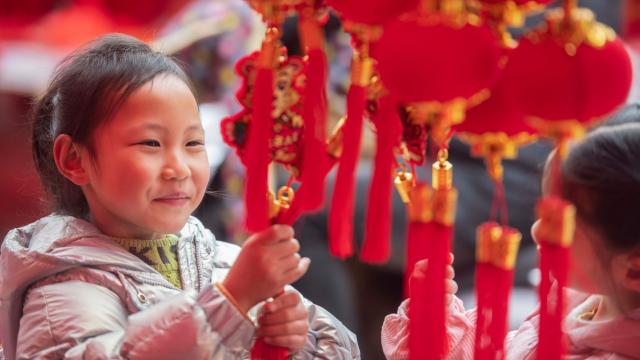Lunar New Year, known as “Spring Festival” in China and sometimes called “Chinese New Year” in Australia, is among the most widely celebrated holidays on earth. The beginning of a new year on the Chinese lunar calendar is marked by family reunions, gift-giving, and delicious food.
When is the Lunar New Year?
This year, celebrants are welcoming the year of the Tiger on February 1, with a holiday season that continues until February 15. The date of Lunar New Year changes every year, but it usually falls on the second new moon after the winter solstice. (It’s a little more complicated than that, but I won’t bore you with how the date can be affected by the intercalary months necessitated by the Chinese lunisolar calendar.)
How is the Lunar New Year celebrated?
While the new year celebration originated in China as early as 1600 BC, it’s now celebrated in Korea, Vietnam, Japan, Mongolia, Tibet, and beyond. Like any widely-observed holiday, Chinese New Year celebrations are a stew of new and old customs and traditions that can differ wildly from place to place and family to family. But in China, the first day of the new year is traditionally marked by families reuniting, food, gifts, and fireworks.
- Family togetherness: Getting together with relatives is such a big part of Lunar New Year, it occasions the largest human migration on the planet. In pre-COVID days, there were an estimated three billion trips per year taken during the holiday month. Almost everyone travels to see their families, so it makes Thanksgiving Eve in the U.S. look like nothing.
- Reunion Dinner: Families traditionally celebrate the new year with a feast called “reunion dinner,” considered by many to be the most important meal of the year. The most common dishes served are dumplings (thought to bring wealth) and fish (because its name in Chinese sounds like “surplus”). Rice wine and other spirits are common too, because it’s not a holiday if no one gets drunk.
- Gift-giving: The most common kind of gift given for Lunar New Year is money, usually in a red envelope. Red is the predominant colour of the Lunar New Year because it’s thought to be lucky. Speaking of luck, if you’re giving out lucre for the new year, make sure it’s an even number, preferably ending in “8” for maximum luck.
- Fireworks: Like any good holiday, Chinese New Year is celebrated by blowing things up. Families traditionally head outside before midnight and join everyone else in lighting fireworks and firecrackers to ring in the year (and terrorize dogs and cats).
Other important days during the Chinese New Year season
The holiday season around the new year used to be celebrated for two weeks in China, but like the twelve days of Christmas, it’s now generally condensed into a few important days.
- Universal Birthday of Humans: In China, the seventh day of the year on the lunar calendar is called the “Universal Birthday of Humans.” It’s when everyone adds a year to their age. Since Chinese people also use the Gregorian calendar, everyone has two birthdays per year. I feel ripped off.
- Lantern Festival: The end of the new year season is marked by the Lantern Festival that takes place on the 15th day of the first lunar month. It’s celebrated by lighting and watching lanterns, solving riddles written on lanterns, and eating lanterns. Wait, I mean eating Tangyuan, sweet rice balls.
What about the Chinese zodiac?
The Chinese zodiac is a repeating cycle of 12 years, with each year represented by a different animal, and people are thought to embody the traits of the spirit animal of their birth-year. Perhaps you’re familiar with the Chinese Zodiac from placemats at Chinese restaurants.
2022 is a year of the Tiger, a symbol of strength, exorcising evils, and braveness. People born during Ox and Goat years will be luckiest in 2022, where Rats, Snakes, Monkeys, Pigs and Dogs will have to work harder this year than other signs. Rabbits, Dragons, Horses and Roosters can relax; we’re going to have a smooth 2022.
Who is Nian, the Chinese New Year monster?
All good holidays all have monsters, and in China, the New Year monster is named Nian. A version of the modern legend goes something like this: At the beginning of every year, Nian, often depicted as a flat-faced lion with the body of a dog and prominent tooth, comes out of its lair to feast on men and animals.
Luckily, the monster is terrified of loud noises, fire, and the colour red, so people put red lanterns and other red decorations on their houses to keep it from getting inside, and light firecrackers to scare it away from town.
“Nian” also means “year,” so it seems a symbolic way of chasing off an old, monster year to welcome a new, awesome year.
‘Lunar New Year’ is the least-bad name for this holiday
We just don’t have a good name for Lunar New Year. The old name in English was “Chinese New Year,” but that doesn’t work, because even though the holiday originated in China, it’s celebrated in many other countries.“Lunar New Year” is not a good name either because it’s too vague. There are lots of holidays that mark the beginning of lunar calendars, from Diwali to Rosh Hashanah, and each of these could be called “Lunar New Year” too. The Chinese call it “Spring Festival,” but we can’t just go for that because it has different names in other countries. No matter what you call it though, the holiday has dumplings, cash-gifts, and a cool monster, so it’s clearly amazing.

Leave a Reply
You must be logged in to post a comment.